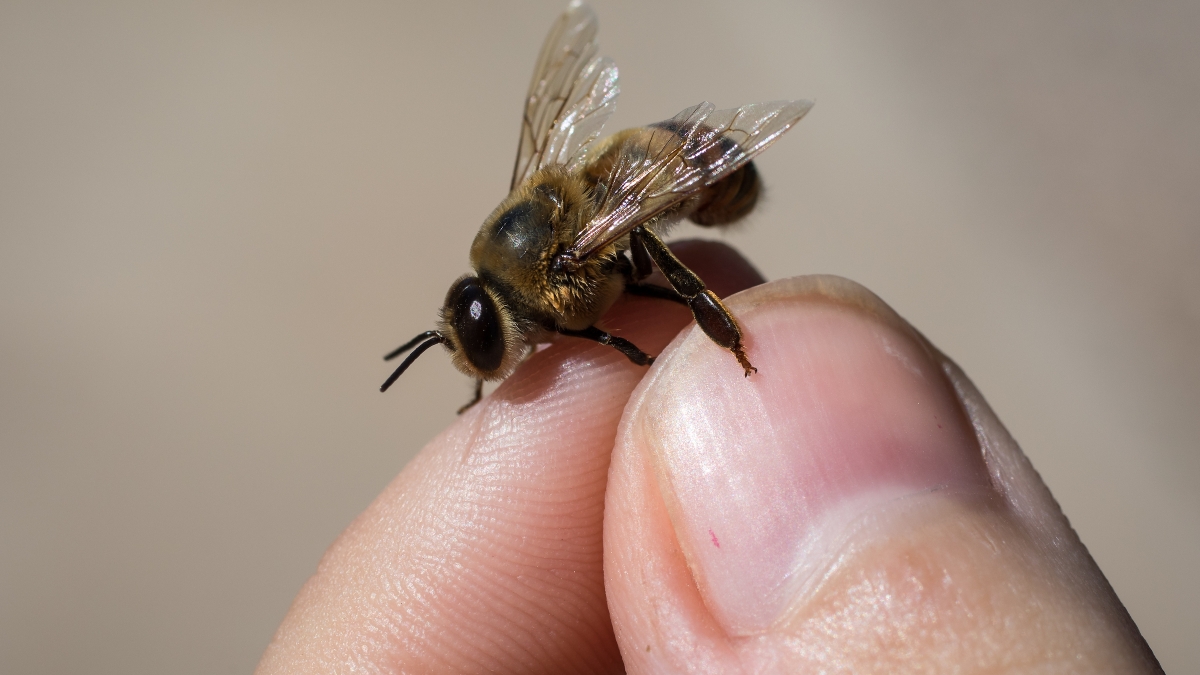It’s Friday night and you’re going out to dinner with your grandparents. You’re going to Sizzler, because they go there … every … single … Friday. It’s not a question.
But on Saturday night, you head out with your friend who tries every new and funky place in town. Who knows what it’s going to be this weekend?
There’s a learning behavior called latent inhibition. It screens out irrelevant stimuli, allowing the mind to focus on the most pressing and practical issues. If you’ve ignored emails to get a report in on deadline, you’re familiar with it.
Bees with high latent inhibition forage at the same trusted spots, day in and day out. Low latent inhibition bees learn new and familiar food locations equally well.
Interactions between the two types drive the hunt for food in honeybee colonies, according to a new study published by Arizona State University postdoctoral researcher Chelsea Cook of the School of Life Sciences.
This can be a boon for collectives like honeybees, who need to constantly balance exploration for new food sources with tapping known sources in a fluid food landscape.
But there’s a mysterious question lurking beneath the discovery. Who wins out?
High latent inhibition bees are great at focusing in on preferred food locations. They want to go to Sizzler. Period.
“In the lab, we can test this behavior,” said Cook, the lead author of the paper“Individual Learning Phenotypes Drive Collective Behavior” was published in the Proceedings of the National Academy of Sciences.. “We familiarize them to an odor that's not associated with any important information. Those high LI bees cannot learn that later. They're like, ‘I've already learned that. This is unimportant.’”
Chelsea Cook at the ASU Bee Lab. Photo by Charlie Leight
Low latent inhibition bees are generalists and learners. They’re open to new experiences. They learn that something that was unimportant before is important now.
“They’re like, ‘Oh, cool. This was unimportant earlier. Totally fine. It's important now I'll learn it.’ So they're open to experiences. … We see this in the field too, when we put those low LI bees out there, they're visiting all the feeders there. They don't care which one was out there first, which one came later, they'll visit everything. Whereas those high LI bees, they learned that that first feeder was important and it gave them food. ‘This has all the info. We don't care about the other ones. We're just going to focus in on the one that's there and giving us food.’”
Here’s the rub: When bees return to the hive after foraging, they do what’s called a waggle dance. It conveys a lot of information to the rest of the hive — how far away food is, what direction it’s in, and so on.
High latent inhibition bees do a more enthusiastic waggle dance when they come back to the hive. Sort of like when you and your friends are trying to pick a place to eat, there’s always one person who’s vehement about going to one place.
“That's the high LI bees, right?” Cook said. “They're like, no, this is the place, it's giving us food. So they come back and they're more enthusiastic. The feeders that those bees are visiting are exactly the same, right? So it's just the translation. It's what those bees are paying attention to and how those bees are valuing that information themselves to come back to the group and actually communicate that information.”
What happens in the bee world in a mixed colony? Who wins out? The low latent inhibition bees end up behaving like high latent inhibition bees. They give up. They go to Sizzler and quit trying new places.
“Why do they make that switch now?” Cook said. “Why are they only going to the familiar feeder and paying more attention to that familiar feeder? There's this critical tipping point of what the composition of that population is. So if you have one high LI friend, maybe they're not going to convince your grandparents to go somewhere else. But if there is enough, if there's a critical mass, they will just get you to go to the old, familiar, and not try anything new. And that's exactly what those high LI bees are doing. There was the critical mass of the 50% that are forcing those lower LI bees with their waggle dance.”
Top photo by Charlie Leight/ASU Now
More Science and technology

Indigenous geneticists build unprecedented research community at ASU
When Krystal Tsosie (Diné) was an undergraduate at Arizona State University, there were no Indigenous faculty she could look to in any science department. In 2022, after getting her PhD in genomics…

Pioneering professor of cultural evolution pens essays for leading academic journals
When Robert Boyd wrote his 1985 book “Culture and the Evolutionary Process,” cultural evolution was not considered a true scientific topic. But over the past half-century, human culture and cultural…

Lucy's lasting legacy: Donald Johanson reflects on the discovery of a lifetime
Fifty years ago, in the dusty hills of Hadar, Ethiopia, a young paleoanthropologist, Donald Johanson, discovered what would become one of the most famous fossil skeletons of our lifetime — the 3.2…

